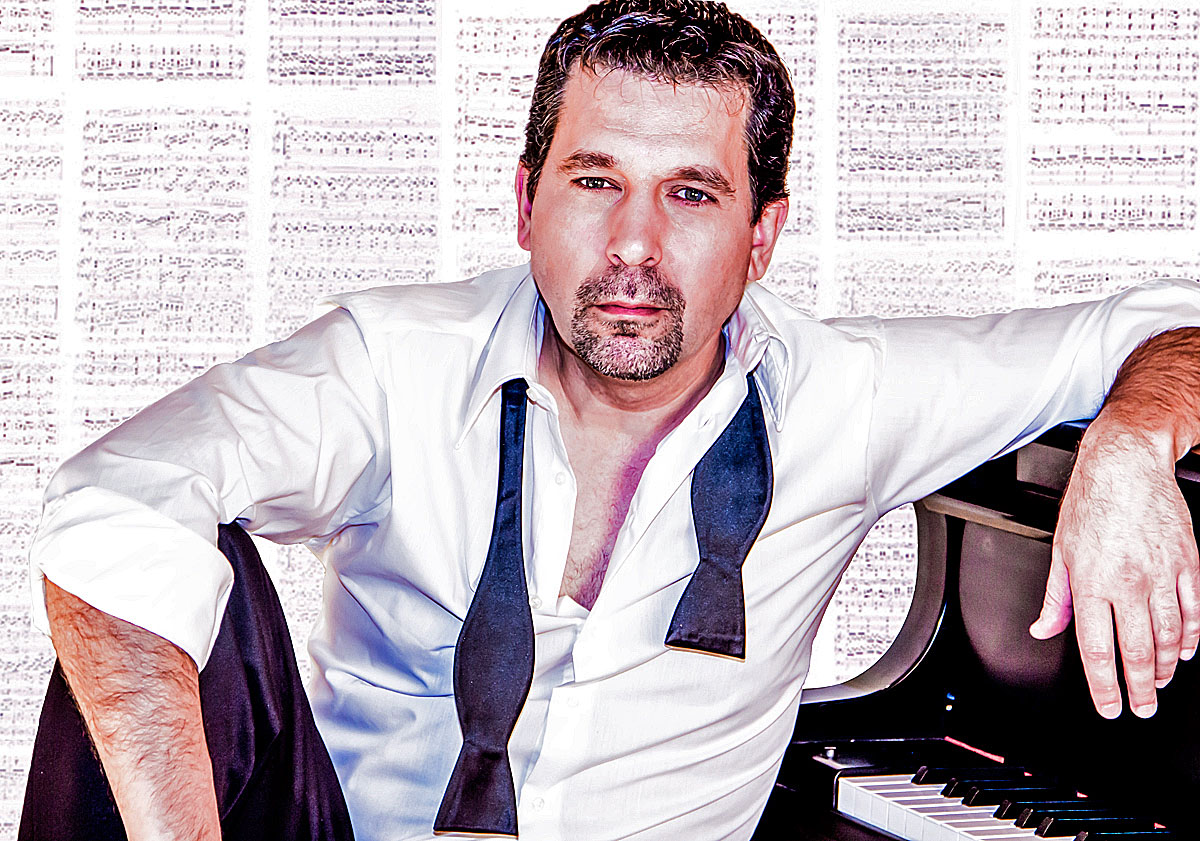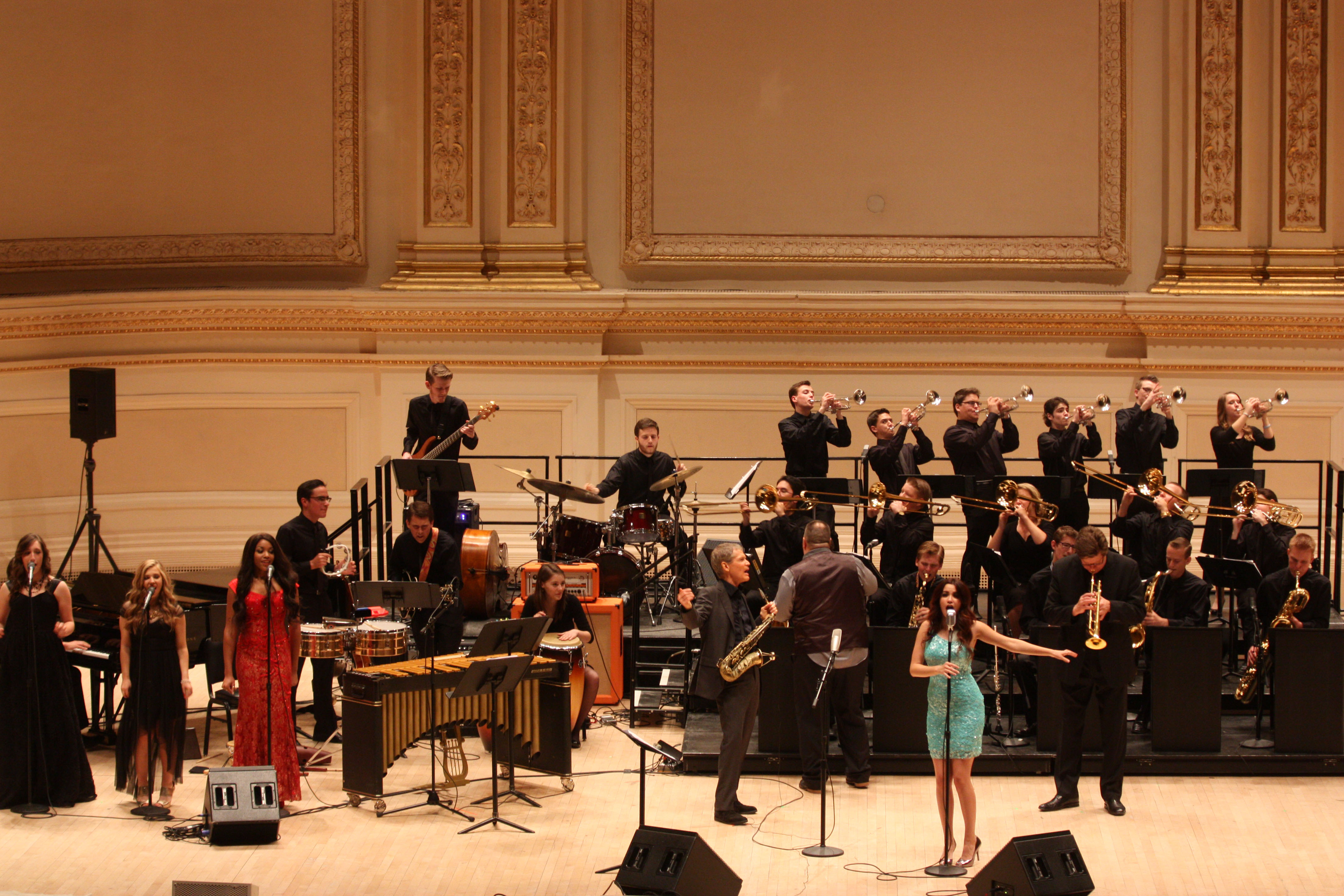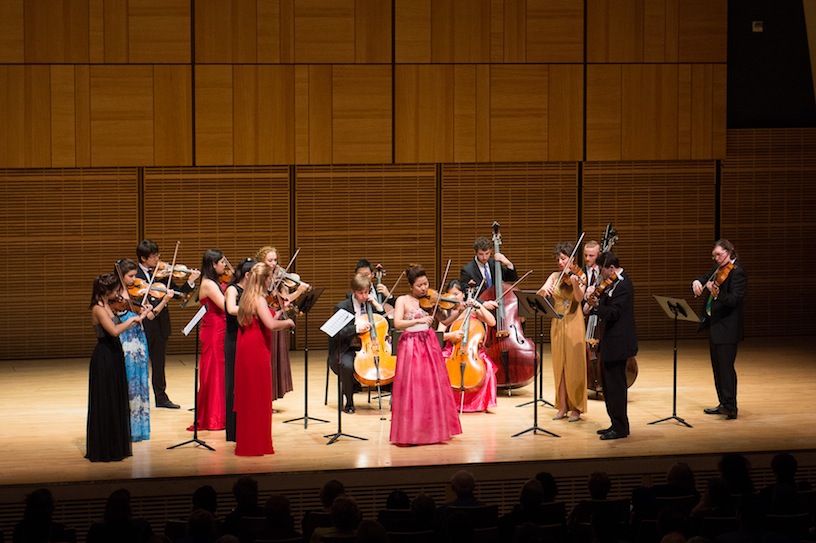New York Concert Artists and Associates continued its fifth season of concerto evenings with four staples of the piano concerto repertoire – the Schumann Concerto, the Saint-Saëns No. 2, and the 3rd and 5th by Beethoven. Combining forces with the NYCA Symphony Orchestra under excellent conductor, Eduard Zilberkant, were four young female pianists, all with impressive lists of accolades and all pursuing a doctorate or having earned one. If one needed an evidence of the difficulty of distinguishing oneself in classical music these days, one would need to look no further than the collective biographies of these young pianists. The proliferation of credentials and increased need for opportunities today underscore the value of NYCA’s mission to promote the next generation’s performers. While this evening was not one of the best in memory by this organization, one did come away thinking that the valuable orchestral experience was bound to enrich and refine the playing of each of the soloists.
As I’ve mentioned in a previous review, there are hazards in presenting so many concerti in one evening, not the least of which is a sense of haste that can beset even the most seasoned performers. There was just such a sense of haste, on this occasion, which seemed to affect all of the performances in some way or other.
Yu Jung Park, began the evening with Beethoven’s Concerto No. 3 in C minor. A work requiring a dark intensity and drama, it also requires a fierce impetus in the opening scales of the first movement; it is easy, though, to go overboard into the realm of rushing, and this seemed to be what happened. What at first was a minor discrepancy of tempo between soloist and orchestra escalated into a generally unsettled feeling that eventually took the movement off the rails. All was recovered expertly, but it is hard to recover completely from the general skittishness that results from such an occurrence. In and out of it all, one appreciated the pianist’s excellent finger work, and where she was alone, for example in the cadenza of the first movement, she seemed to find her comfort zone. It will be a joy to hear this pianist again, because she has much to offer. Her slow movement displayed beautiful sensitivity to harmonic changes, and she finished the work in fine form. She is currently working toward a DMA at Temple University, having already attended Peabody and the Korean National University of Arts. Her wide-ranging musical interests currently include Dutilleux and Liszt transcriptions of Beethoven.
The next performer, Sarah Chan, also has run the gamut credential-wise. She has earned Music degrees from the Manhattan School of Music, Peabody, and Eastman (where she obtained her doctorate), with additional studies at Le Conservatoire National Supérieur de Musique et de Danse de Paris and at the University of Michigan. She has pursued and extra-musical education at the Sorbonne, Columbia University, and the University of Michigan, and she currently teaches music and French courses at Northwestern Oklahoma State University. Her Schumann Concerto had much to admire but also did not seem impervious to the spirit of dispatch that pervaded the evening. Some minor glitches, which appeared in an otherwise exciting performance, could have been avoided with just a bit more breathing room, and some climaxes could have been more potent if achieved through dynamic building rather than acceleration. Inevitably with more performance of this work there will emerge a bit more dovetailing as the lead role is passed from piano to orchestra and back, but it showed plenty of spirit and pianism, ending the first half well.
Perhaps the strongest contribution of the evening in terms of neatness and technical reliability was from Hyojung Huh, in the Saint-Saëns Piano Concerto No. 2 in G minor. Again, listing myriad credentials, including degrees from Seoul National University, Westminster Choir College, Indiana University, and the University of Wisconsin (in subjects including choral conducting and sacred music), she demonstrated a thoroughness and seriousness of approach that carried her from start to brilliant finish. One might have wanted a bit more power to balance the orchestra, less understatement in the first movement’s effusive melodies, and a bit more joie de vivre in the work’s jaunty scherzando movement, but all in all one received the “bang for the buck” that one hopes for in this delightful piece.
The final performer of the evening was Do Haeng Jung in Beethoven’s Concerto No. 5 in E-flat Major (the “Emperor”). One appreciated from the start the fact that this performer took considerable time before and during the opening. This piece requires mature pacing, and it received it. It also received a big, full sound that set the tone for the nobility in this piece. Sure enough, there was again the almost obligatory snag in the first movement, but the pianist recovered to regain complete composure in the two next movements. Glancing through Ms. Jung’s biography, one reads that she has degrees from the Seoul National University and the Cincinnati Conservatory of Music, the latter where she is also pursuing her doctorate. What catches one’s eye is the mention of awards in collaborative performance, in addition to the usual solo prizes; indeed, Ms. Jung demonstrated a flexibility which helped hold the performance together and will continue to serve her in good stead as a concerto soloist. She ended the evening with a solid and bravura performance, receiving generous applause that undoubtedly was intended to include the cumulative efforts of the night and the close to a fine NYCA season.



